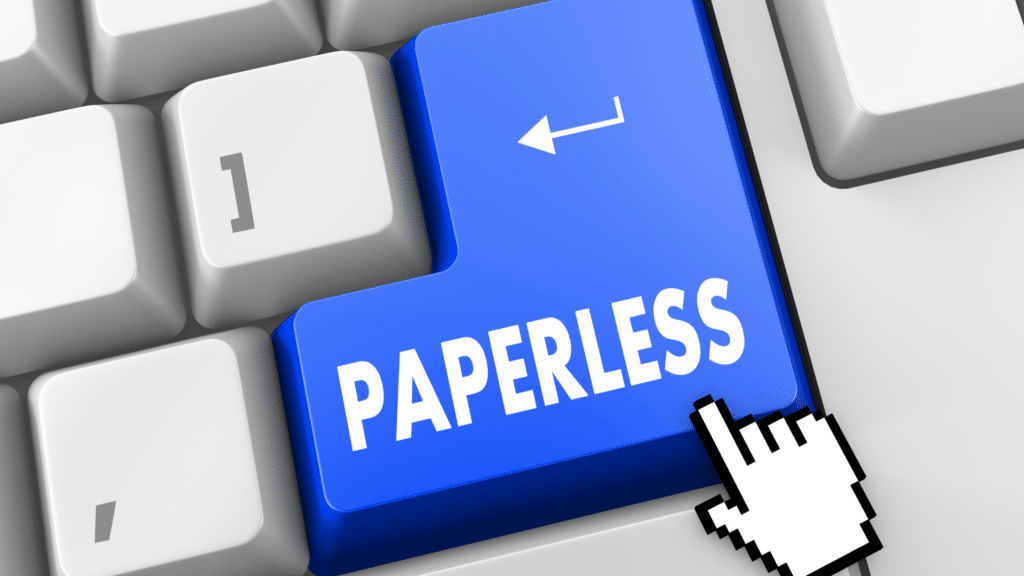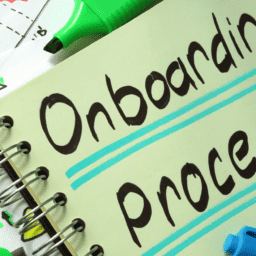Historically, onboarding new employees was a process fraught with paperwork, from filling out employment forms to signing policy documents. This traditional approach was time-consuming and prone to errors, leading to inefficiencies in the onboarding experience for both employees and HR professionals. The introduction of paperless onboarding has revolutionized this process, offering a seamless, efficient, and environmentally friendly alternative.
In today’s digital-first world, businesses constantly seek methods to enhance efficiency and streamline operations. One significant area of transformation is the human resources department, specifically in employee onboarding. Here, ‘paperless onboarding’ emerges as a powerful tool, revolutionizing how companies onboard new hires.
Understanding Paperless Onboarding
Paperless onboarding integrates new employees into an organization using digital tools and platforms, eliminating the need for physical paperwork. This approach involves using online systems for everything from filling out employment forms and contracts to conducting orientation programs.
Key Components of Paperless Onboarding
- Digital Documentation: Replacing paper forms with digital versions that can be completed online.
- Electronic Signatures: Using e-signature tools for legal and official documents.
- Automated Workflows: Streamlining processes such as document submission and verification through automation.
- Online Training and Orientation: Conducting training sessions and orientation programs through digital platforms.
Unpacking the Benefits of Paperless Onboarding
- Increased Efficiency: The most immediate benefit of paperless onboarding is significantly reduced time and resources spent on manual processes. Digital forms and electronic signatures accelerate the onboarding process, allowing new hires to integrate into their roles more quickly.
- Enhanced Accuracy and Compliance: With data entry automation, the chances of human error are drastically reduced. Paperless systems ensure that the information is accurate and consistently up-to-date, aiding in compliance with employment laws and regulations.
- Improved New Hire Experience: A streamlined digital onboarding process is more engaging and less intimidating for new employees. It allows them to complete necessary steps at their own pace and convenience, fostering a positive introduction to the organization.
- Cost Savings: Transitioning to a paperless system reduces the costs of printing, storing, and managing physical documents. Over time, these savings can be significant for the organization.
- Environmental Sustainability: Reducing paper usage aligns with eco-friendly business practices, demonstrating a company’s commitment to sustainability.
- Data Security: Digital onboarding platforms often offer enhanced security features, ensuring that sensitive employee data is protected against unauthorized access or breaches.
The Paperless Onboarding Process in Action
Implementing a paperless onboarding system typically involves several key steps:
- Selection of a Suitable Digital Platform: The choice of platform should align with the company’s specific needs, offering customization and integration with existing HR systems.
- Training and Support for HR Staff: Ensuring HR professionals are well-versed in using the new system is crucial for a smooth transition.
- Effective Communication with New Hires: Clearly articulating the steps and benefits of the paperless onboarding process to new employees is essential for their engagement and compliance.
- Continuous Evaluation and Improvement: User feedback should be used to refine and improve the onboarding experience.
Real-World Impact
Various industries, from healthcare to technology, have reported significant improvements in their onboarding processes after going paperless. For instance, healthcare facilities have noted quicker placement of critical staff, directly impacting patient care. Tech companies have seen faster integration of talent, allowing them to keep pace with the rapid development cycles.
The Future of Onboarding
The integration of technologies like artificial intelligence (AI) and machine learning (ML) with paperless onboarding systems is set to offer even more personalized and efficient experiences. These advancements will further streamline the recruitment process, making it more responsive to the organization’s needs and its new employees.
Adopting paperless onboarding is a clear step towards a more efficient, eco-friendly, and employee-centric approach to recruitment. It’s a strategy that simplifies administrative processes and aligns with broader organizational goals of sustainability and innovation. As businesses continue to evolve in this digital era, paperless onboarding will undoubtedly play a pivotal role in shaping the future of workforce management.





